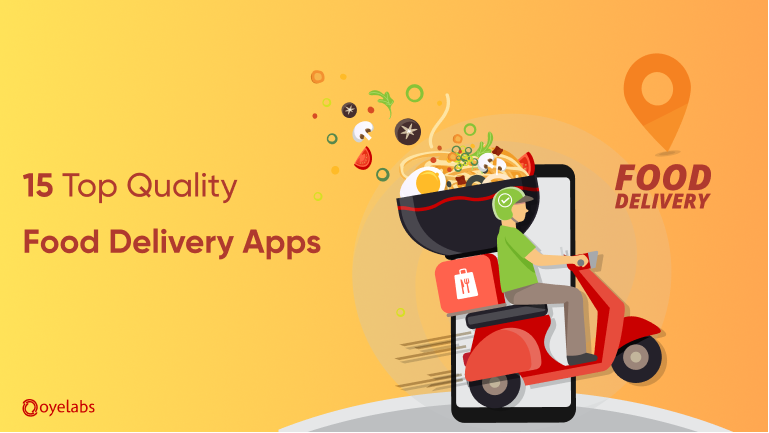Considerations To Know About Find Out What’s New

The food delivery industry has seen rapid expansion in recent years, driven by the increasing demand for convenient on-demand services. With platforms like UberEats and DoorDash transforming the way people request meals, the focus has shifted to developing cutting-edge food delivery apps. These apps provide customers the ability to place orders from their favorite restaurants and have it delivered directly to their doorstep. For businesses, the task is to leverage technology to improve delivery logistics and guarantee a seamless customer experience.
Building the Perfect Food Delivery App
Developing a profitable food delivery app demands a thorough understanding of the market trends and operational strategies that lead the industry. Whether building a comprehensive platform or concentrating on niche areas like virtual restaurants or cloud kitchens, the app’s features needs to cater to both users and restaurants. Essential elements such as real-time order monitoring, efficiency improvement, and customer satisfaction metrics hold a vital role in guaranteeing customer loyalty.
Restaurant Delivery Partnerships: A Winning Strategy
Eateries are increasingly forming collaborations with delivery platforms to expand their market penetration. These agreements help restaurants cater to a wider audience while reducing the challenges of running their own delivery services. The success of such alliances hinges upon technology integration, which enhances the user interface design and enhances the user satisfaction. Through these collaborations, restaurants can boost customer loyalty and ensure that they stay relevant in a crowded market.
How KPIs Drive Food Delivery Profitability
For any business, knowing its key performance indicators (KPIs) is crucial to maintaining profitability. In the food delivery sector, KPIs such as delivery time, precision in orders, and user happiness are essential. Measuring and improving these KPIs allows delivery services to offer a superior customer experience. Additionally, keeping an eye on profitability aids companies optimize operations, lower charges, and improve overall effectiveness.
Customer Satisfaction and User Retention Strategies
A significant factor in the growth of delivery apps is their capacity to retain users through excellent customer service. Providing quick service and resolving user feedback swiftly can help companies enhance their service delivery. In addition, introducing loyalty programs and providing incentives like free delivery can increase user retention. User happiness can be additionally bolstered by ensuring food quality control and providing a seamless processing system.
The Role of Technology in Food Delivery
Technology is at the heart of modern food delivery services, helping companies refine their operations and deliver a seamless customer experience. From mobile app development to real-time order monitoring, tech integration plays a critical role in the growth of delivery platforms. The use of data analytics to understand customer demographics and preferences allows delivery services to provide personalized experiences, furthermore enhancing user engagement.
Competitive Analysis in the Food Delivery Market
The delivery sector is fiercely contested, with many players vying for market share. Conducting a competitive analysis enables companies to gauge their standing in the market User Experience in Delivery Apps and identify chances for growth. Delivery platforms must differentiate themselves by providing distinctive features such as virtual restaurant options, quick service, or specialized cuisine options. Understanding sector dominance and customer actions enables companies to customize their services and remain ahead of the competition.
The Impact of the Pandemic on Food Delivery Services
The global health crisis has had a substantial impact on the delivery services, boosting its expansion as consumers opted for on-demand apps due to social distancing measures. The change has emphasized the necessity of technological evolution in the food industry, with restaurants rapidly embracing e-commerce platforms and delivery apps. As the world adjusts to Adapting to Changes in Food Delivery Preferences new routines, food delivery businesses must continue innovating to satisfy evolving consumer demands and ensure market expansion.
Investing in Food Delivery Startups
The delivery sector presents plenty of entrepreneurial chances, with investors eager to backing companies that offer unique solutions. From creating similar platforms to building niche delivery apps, business owners have a variety of paths to explore. Investors seek out strong operation plans and the capacity to grow, particularly in aspects like delivery network optimization, user experience (UX), and tech integration. By concentrating on these sectors, startups can attract substantial investments and establish themselves in the industry.
Enhancing Food Delivery Service Profitability and Expansion
Growing a food delivery business requires a strong base built on market penetration, pricing strategies, and unique offerings. As local delivery services expand, businesses should concentrate on establishing a reliable logistical system and ensuring quality standards. In addition, widening the menu options, forming new restaurant partnerships, and adopting advanced technology in food delivery will drive further expansion. By continually enhancing delivery times and guaranteeing high customer satisfaction, companies can maintain a market lead and increase revenue generation.
These themes provide a complete understanding of the service landscape, with a emphasis on key aspects that propel the industry forward. Whether you’re a startup or an experienced company, concentrating on these areas will assist you succeed in the competitive world of food delivery.